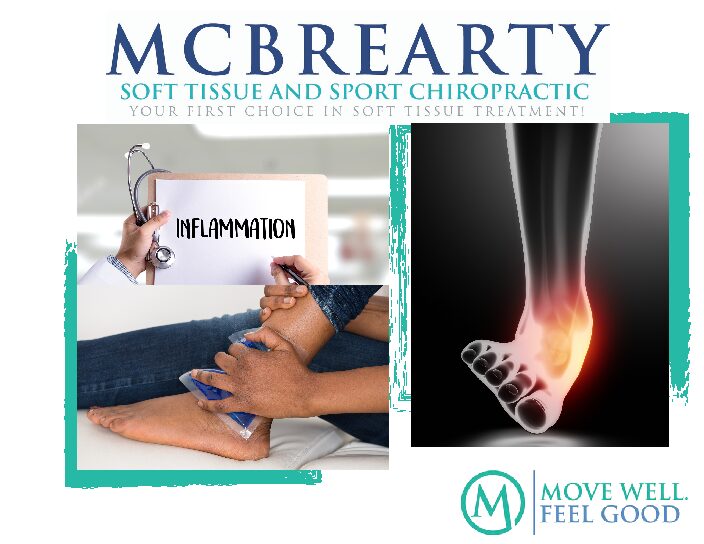Ankle pain is a very common issue for a number of athletes. Whether you’re juking and jiving or jumping during activity, it is not uncommon to feel the slight tweak in the ankle that causes you to limp around or even hobble from time to time. All athletes think they just need to suffer through the ankle sprain and walk it off without realizing there are ways to allow you to effectively manage the slight “tweak” in a way that will actually resolve the issue, allow you to play without pain, and allow you to feel great to move.
There are very basic steps that you can take when you have an ankle sprain to begin the healing process. The first is to start by icing the area where it is most painful. Anytime you have an injury your body will automatically go into the phase of the feeling and the first initial phase is inflammation. Your body is programmed to react with inflammation when it senses the tissue has been damaged. The inflammation phase causes redness and swelling and makes you sensitive to every move you make. By icing the area immediately after you experience the injury, you will minimize the inflammation and allow your body to move into the second phase of healing which is the repair phase.
In the repair phase, your body will lay down scar tissue to repair the damaged tissue from the sprain. The scar tissue can be laid down in two ways. The first way is very dysfunctional and when you look at these tissues under a microscope, they look like overlapping spiderwebs or strings of spaghetti string together. This causes the tissue to not be able to stretch effectively, thereby limiting your range of motion. The other effect of this is functional tissue is it reduces the amount of blood flow into the area. When you reduce blood flow into an area, this will cause these tissues to fatigue faster and heal slower. If you are involved in a sport where you are practicing every single day this puts you at risk for re-injuring your ankle in the future. A simple method they can perform to make sure you allow these tissues to heal in a functional manner is to effectively stretch and soft massage the muscles and tendons that surround the ankle joint to allow your body to have the ability to feel great to move. There are several methods of soft tissue treatment that you can do on yourself. Some effective self-massage tools that you can use are a foam roller, lacrosse ball, peanut, and Rollga. Many of these tools can be demonstrated on our YouTube channel where we walk you through how to effectively self-massage the lower leg and the muscles that surround the ankle joint.
It is important that you effectively manage the inflammation in the ankle, establishing as much range of motion in the ankle joint immediately after the injury, and effectively stretching and self-massaging the muscles and tendons that surround the ankle joint. If you are able to do this, you will be able to get your ankle to feel great to move and get you back to performing at the level that you expect yourself to as soon as possible.

